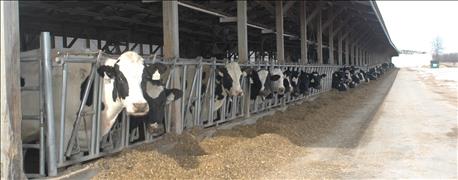November 21, 2016

Probably the most well-known of the corn byproducts is distillers grains, but other byproducts include distillers syrup, corn gluten meal, corn germ meal and corn gluten feed. What you may not know is that these products can contain very high levels of sulfur. While it is true that sulfur is a necessary mineral for cattle, too much can cause serious health issues.
One of the keys of nutrition is this simple concept: moderation. Feeding too much of something can cause a toxicity, and feeding too little can cause a deficiency. When feeding corn byproducts, this concept especially holds true. If you are feeding or plan to feed corn byproducts, pay special attention to these six considerations:

EVERYTHING IN MODERATION: One of the keys of nutrition is this simple concept: moderation.
1. Sulfur requirements. Sulfur is used to make certain proteins, maintain healthy rumen microbes, and aid in fiber digestion. According to the National Research Council, 0.15% of the diet dry matter is needed for finishing cattle, and gestating and lactating beef cows. In dairy cattle, the requirement is 0.2% of the diet dry matter.
2. Maximum sulfur limits. If the diet contains high levels of grain or concentrates, dietary sulfur should not exceed 0.3% of the diet dry matter. Otherwise, sulfur can be fed at 0.4% of the diet dry matter.
3. “Polio.” Sulfur fed in excess of what the animal requires is excreted through urine and feces, and is also belched out as hydrogen sulfide, which is a toxic gas. Some of this belched gas can be re-inhaled and can cause damage to the lungs. In addition, hydrogen sulfide can reach the brain, and at high enough levels, it can lead to a condition called polioencephalomalacia, more commonly known as “polio.” Polio causes softening of the brain’s gray matter and results in symptoms including incoordination, blindness and, in very severe cases, death.
4. Water. Water can contain sulfur and counts toward the maximum limit. Sulfur levels in water can vary greatly depending on where you are located, so it’s a good idea to get your water tested. For example, if the water sulfate concentration is 1,500 parts per million, a 1,000-pound steer eating 20 pounds of dry matter and drinking 12 gallons of water on a 70 degree F day would ingest 0.05 pound of sulfur. In this case, sulfur would make up 0.25% of diet dry matter from the water the steer drank alone.
Check out this sulfur calculator.
5. Sulfur variability. Do not rely on book values. A wide range of sulfur levels can be found in corn byproducts. In addition, there can be a wide variation between processing plants. Even within the same processing plant, there can be variation in sulfur levels from batch to batch. Again, this variability can be very large. Researchers at the University of Minnesota sampled eight ethanol plants and found distillers grains with sulfur levels ranging from 0.34% to 1.05%. Other feed ingredients can contain sulfur, so be sure to get them tested, too.
6. Aid from a nutritionist. Don’t try to do this on your own. Consult a nutritionist to help you balance your diet. Be sure to take advantage of these trained professionals’ expertise.
Binversie is the Brown County Extension agriculture educator.
You May Also Like




